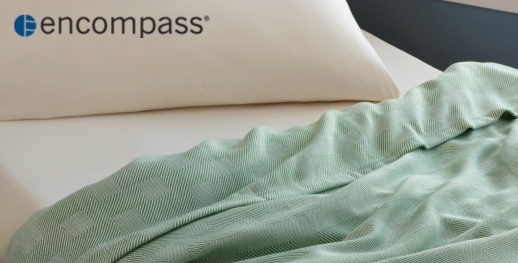Is your staff handling your facility’s linens properly? Improper linen handling can create a gap in your infection prevention protocols, placing both patients and staff at risk for exposure to contaminated textiles.
Four steps to prevent infection with improved linen management
Linen handling plays an important role in hospital infection prevention. Many patients spend most of their time in their beds; as a result, soiled healthcare linens harbor a number of pathogens.
Here are three steps your facility’s environmental service (EVS) director should evaluate when assessing your linen handling procedure:
- Ensure the EVS staff is safely removing soiled linens
Used healthcare linens harbor a number of pathogens, and contaminated linens are a health risk for patients and staff members. Once safely removed from a patient’s bed, soiled linens should be placed directly into a fluid-resistant hamper bag using protective gloves and with a minimum of agitation and then transported safely to the laundry chute or soiled collection cart, and eventually to the laundry.
- Guarantee the laundry understands the CDC’s healthcare linen processing standards
Properly washing soiled patient linens is an essential second step in the linen handling process. Linens that have not been properly processed according to industry standards could place patients at risk for exposure to pathogens.
An accredited commercial healthcare laundry service has a full understanding of the requirements necessary to ensure linens are cleaned according to infection control standards. If your facility’s laundry is processed in-house, ensure that you have the proper ventilation, cleaning chemicals and equipment to safely remove disease-causing pathogens without damaging your linens. Also, make sure your linens are up handling to the challenging process without wearing too quickly.
- Confirm that linens are protected during each step of the handling process
The next necessary step is to transport the clean linens back to the healthcare facility and on to the patient floors. This step is equally important as the previous two, since linen could become contaminated in route. In the thirteen episodes documented worldwide since 1970 where healthcare textiles were implicated in the spread of disease, only three have occurred in the United States, and all were linked to breakdowns in transportation, storage, and distribution processes.
Ensure safe storage and transport of linen by limiting exposure to air and dust and keeping carts covered when transporting product from the linen room to the carts up on the patient floors.
- Make it easy for all staff to comply with linen handling protocols
How do you ingrain the linen handling protocols in the minds of your workers? How do you ensure that they complete the procedure the right way every time? How do you implement training? Document each step with a standardized process that begins with removing soiled linens from patient beds to remaking the discharge patient beds.
In addition to keeping industry recommendations in mind, here are some key features to look for when your facility is looking to upgrade their linen handling processes:
- Hamper carts - A well-designed system will include the tools needed to safely bag soiled linens and remove them from patient rooms. Snug fitting lids are necessary to prevent cross-contamination. A system that includes color-coded bags is a plus!
- Simple but comfortable products - efficiency increases when your linen processes include easily identifiable products that will not require extensive sorting.
- Customize and cover your department carts - Every nursing and ancillary department has different linen needs based on their patient population. A covered customized unit cart allows staff to stock the carts in a way that makes the most sense for that department and protects clean linen during the storage and transport process.
Controlling the spread of infection and superbug outbreaks can be a matter of life and death in the healthcare industry. Should your acute care facility encounter a linen-related infection control issue, you don’t want your linen handling protocol to be the culprit.
In the acute care industry, protecting patients should be every facility’s goal. Ensuring proper linen handling is one component to minimizing infection cross-contamination.
Email or call me today at 1-800-328-5525 today to learn more about how we can help your staff handle linens the safe way.


